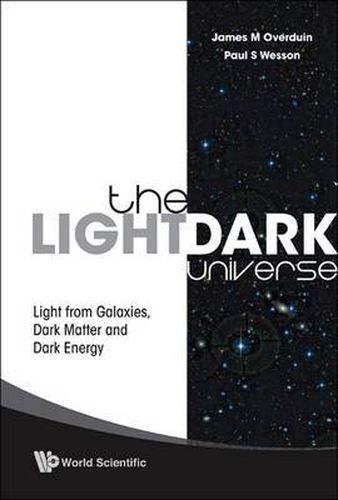Readings Newsletter
Become a Readings Member to make your shopping experience even easier.
Sign in or sign up for free!
You’re not far away from qualifying for FREE standard shipping within Australia
You’ve qualified for FREE standard shipping within Australia
The cart is loading…






To the eyes of the average person and the trained scientist, the night sky is dark, even though the universe is populated by myriads of bright galaxies. Why this happens is a question commonly called Olbers’ Paradox, and dates from at least 1823. How dark is the night sky is a question which preoccupies astrophysicists at the present. The answer to both questions tells us about the origin of the universe and the nature of its contents - luminous galaxies like the Milky Way, plus the dark matter between them and the mysterious dark energy which appears to be pushing everything apart. In this book, the fascinating history of Olbers’ Paradox is reviewed, and the intricate physics of the light/dark universe is examined in detail. The fact that the night sky is dark (a basic astronomical observation that anybody can make) turns out to be connected with the finite age of the universe, thereby confirming some event like the Big Bang. But the space between the galaxies is not perfectly black, and data on its murkiness at various wavelengths can be used to constrain and identify its unseen constituents.
$9.00 standard shipping within Australia
FREE standard shipping within Australia for orders over $100.00
Express & International shipping calculated at checkout
To the eyes of the average person and the trained scientist, the night sky is dark, even though the universe is populated by myriads of bright galaxies. Why this happens is a question commonly called Olbers’ Paradox, and dates from at least 1823. How dark is the night sky is a question which preoccupies astrophysicists at the present. The answer to both questions tells us about the origin of the universe and the nature of its contents - luminous galaxies like the Milky Way, plus the dark matter between them and the mysterious dark energy which appears to be pushing everything apart. In this book, the fascinating history of Olbers’ Paradox is reviewed, and the intricate physics of the light/dark universe is examined in detail. The fact that the night sky is dark (a basic astronomical observation that anybody can make) turns out to be connected with the finite age of the universe, thereby confirming some event like the Big Bang. But the space between the galaxies is not perfectly black, and data on its murkiness at various wavelengths can be used to constrain and identify its unseen constituents.